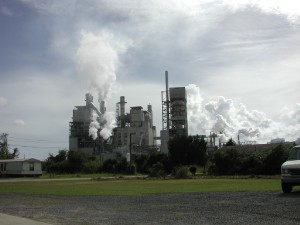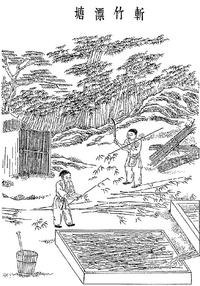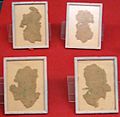Paper facts for kids
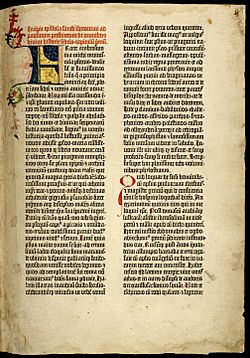
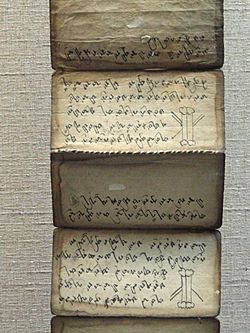
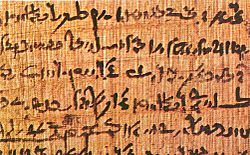
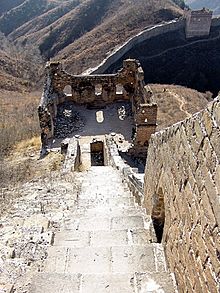
Modern paper is a thin material of (mostly) wood fibres pressed together. People write on paper with a pencil or pen, and books are made of paper. Paper can absorb liquids such as water, so people can clean things with paper. There are many types of paper.
The pulp and paper industry comprises companies that use wood as raw material and produce pulp, paper, board and other cellulose-based products.
Contents
Paper making
Modern paper is normally made from wood pulp. Wood is ground up and mixed with water and other chemicals to make a thin liquid called "paper pulp". Paper pulp can be bleached to make paper more white, and dyes can be added to make colored paper. This pulp is pressed into sheets of paper. Printing is often done on paper before the paper is cut into sheets. Newsprint paper (newspaper) comes in a huge roll, and goes through the printing process as one continuous sheet. It is cut by a machine-driven guillotine blade later. Folding comes last, then packing for distribution.
Sometimes paper is made heavier and more glossy (shiny) by adding clay, and by 'milling' it. Milling is done by squeezing the paper through a series of rollers. Sometimes paper is made from used or waste paper: this is recycling.
Not all paper is made from wood. Other kinds of fiber can be used. People still make paper from cotton, linen and hemp for special purposes.
History of paper
Writing started long before the invention of paper. People wrote on many kinds of material. They wrote on cloth, on the stone walls and on wood. In Mesopotamia the Sumerians wrote on clay tablets, many of which have survived today. In Europe, people wrote on vellum.
First paper
Many centuries ago – as early as the 3rd millennium BC (that's over 2000 BC) – people in Egypt made a kind of paper from the papyrus plant. This is where the word 'paper' comes from. The people of Greece and Rome learned to do this too. The Romans wrote on parchment (made from animal skin), on waxed tablets and on wood (see Vindolanda).
In China 105 AD, the eunuch Cai Lun told his Emperor he had made paper. They had previously used bamboo and silk. The material used in this ancient paper included cotton rags, hemp, various plant fibres and old fish nets. The oldest existing paper with writing on it was found in the ruins of a watchtower in the Great Wall of China. It dates to about 150 AD.p5 Even earlier paper (but with no writing on it) has been claimed: "The oldest surviving piece of paper in the world is made of hemp fibers, discovered in 1957 in a tomb near Xian, China, and dates from between the years 140 and 87 BC". Paper-making was regarded by the Chinese as so valuable that they kept it secret as long as they could.
Spread of paper
People in Japan learned how to make paper with fibres of the mulberry tree, around 610 AD. This is called Japanese paper or Washi. The Chinese invention spread to India, and then to the Middle East, and then to Italy.
An opportunity occurred after The Battle of Talas in 751. Then an Arab army captured soldiers of the Chinese. There were some paper makers among the captured soldiers. From them, paper-making spread throughout the Islamic world. In 757, a paper mill was built at Samarkand. People learned to use linen as paper raw material and to use starch made from flour as an additive.
The Italians used hemp and linen rags. In 1276 the first Italian paper mill was built at Fabriano and, until the 14 century, Italy was a paper supplier in Europe. In 1282 the first watermark was introduced in Bologna.
Machine-made paper
Paper was hard to make. It was cheaper than the old writing materials, but still expensive. A mechanical paper maker was conceived in France 1798, but invented in England. At least one paper mill was using them by 1812. Now the process was cheaper but the raw material was still expensive.
In 1840 Friedrich Gottlob Keller Invented a machine that could make pulp for paper out of wood fibres (instead of the expensive rag paper). Paper became cheap enough for everyone to buy. Around the same time, other inventions were made, like the pencil, the fountain pen, and a printing press that used steam power. With this new information technology, people wrote more letters, made more books and newspapers, and kept more records of what they did.
Today, some of the largest paper-producing countries are China, USA, Canada, Finland, Sweden and Russia. Paper is produced in large factories called paper mills. They produce hundreds of thousands of tons of paper each year.
Uses of paper
Paper is used for writing and printing. Books, magazines and newspapers are printed on paper.
Paper is often used for money. Paper used for money is made in special ways. It does not use wood fiber. It is mostly cotton with additives to make it hard for people to print their own money. A piece of paper money is called a banknote, a bill or a note.
Paper can be used for cleaning. Special forms of paper are used, such as paper towels, facial tissues or toilet paper.
Pretty paper can be used as decoration. It can be pasted onto the walls of a room; this is called wallpaper. Paper can be used to wrap gifts. This is called wrapping paper or gift wrap.
Some kinds of paper are strong and can be used in boxes and other packaging material. Sometimes several layers of paper are held together with glue, to make cardboard.
Related pages
Images for kids
-
Hemp wrapping paper, China, c. 100 BC
-
The microscopic structure of paper: Micrograph of paper autofluorescing under ultraviolet illumination. The individual fibres in this sample are around 10 µm in diameter.
-
Paper mill in Mänttä-Vilppula, Finland
-
Card and paper stock for crafts use comes in a wide variety of textures and colors
See also
 In Spanish: Papel para niños
In Spanish: Papel para niños



